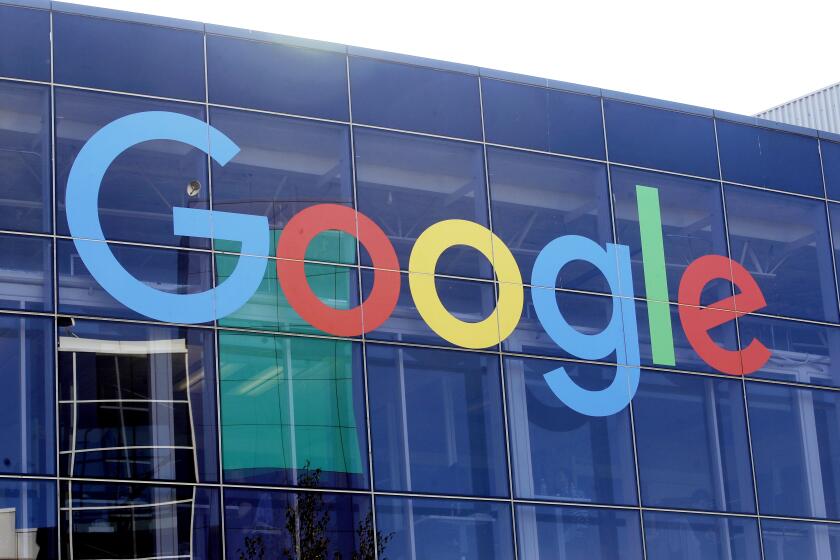Ford has a long road ahead as it tries to rev up sales of Lincoln brand
- Share via
AutoNation Inc., the largest new-car seller in the U.S., owns 18 Mercedes-Benz stores and 11 BMW franchises, but only two that sell Lincolns.
Although AutoNation has poured millions of dollars into buying luxury car franchises and upgrading the look of showrooms, it has pretty much ignored Lincoln, demonstrating the uphill challenge that faces Ford Motor Co. as it looks to rev up its once-marquee brand.
“They know they have to distinguish themselves,” AutoNation spokesman Marc Cannon said. “The new products are very distinctive, but how they market Lincoln will be key.... Will they have enough offerings to really bring consumers in? We don’t know.”
PHOTOS: Lincolns through the years
Car buyers may find out Thursday when Ford will introduce significant revamps of two existing Lincoln models, the MKS sedan and the MKT crossover, at the Los Angeles Auto Show.
Dealers who have been briefed on the vehicles say the models will feature new distinctive styling elements that will carry through to future Lincoln models, as well as new engines, new suspensions and updated interiors. The vehicles will be labeled 2013 models and are expected to appear in showrooms in April.
Next year Ford plans to bring an entirely new Lincoln model to the marketplace.
“No global manufacturer has succeeded in the marketplace without a strong luxury brand,” said C.J. O’Donnell, group marketing manager of Lincoln.
Yet in recent years Ford has done all it could to get out of the luxury business. It sold off premium marquees such as Volvo, Jaguar and Land Rover to raise cash to help restructure the automaker and focus on its core Ford brand. It shut down Mercury last year.
That left Ford with just Lincoln to compete in the luxury market. But Lincoln’s record hasn’t been good.
Sales peaked at nearly 232,000 vehicles in 1990 and have been on a long downward slide — hitting a low of just under 83,000 in 2009, according to Autodata Corp. Lincoln has sold about 71,000 cars through the first 10 months of this year and trails every volume luxury brand but Volvo. Lincoln will finish this year at about the same sales level of 1982.
Starting with the Los Angeles Auto Show, Lincoln wants to send the message that it is making immediate improvements to vehicles that will demonstrate the automaker has engineering prowess and is devoting more attention to detail and craftsmanship, O’Donnell said.
He said Lincoln must “change people’s perceptions of how a Lincoln should drive and handle.”
Behind the scenes, Lincoln is working with its dealers to build service standards at a consistent level across the network, O’Donnell said.
Some won’t make the cut. At the start of this year, Lincoln had 500 dealers in the top 130 markets nationwide. It will have eliminated 175 by the end of this year.
“We want to increase the volume of sales at the dealers that stick with the brand. This allows them cash flow to reinvest in their business,” O’Donnell said.
The company needs to move with some urgency to rebuild Lincoln in the U.S. and then figure out how to sell the cars abroad, analysts said.
“Premium brands in the automotive industry worldwide generate higher profits than mass-volume brands,” said Thilo Koslowski, an auto analyst at Gartner Inc. “The challenge is that there are lots of premium brands, so Ford has to make the Lincoln brand more appealing than what’s already out there to gain ground.”
Crafting a distinct identity will be important, he said.
“While the market is crowded, there is still some territory to define premium from an American perspective. You don’t want to copy what the Europeans have been doing,” Koslowski said.
Whereas the German luxury brands trade on sporty sedans with a styling edge and the Japanese produce vehicles that provide a “comfortable ride and reliability beyond any competitors,” Koslowski said Lincoln could target luxury buyers looking for distinct styling combined with sophisticated onboard entertainment and technology systems.
Lincoln can’t just piggyback on the technology and features it offers in Ford-branded vehicles, he said.
“You can’t re-badge Fords,” Koslowski said. “Those times are over. Consumers are much too smart.”
Ford has made some moves to avoid that trap. It lured away designer Max Wolff from rival Cadillac a year ago and has committed to building a design, research and development infrastructure for Lincoln that is separate from the mass-market Ford brand.
Although Lincoln executives are focusing on the U.S. market now, they also have to start planning how to expand the brand overseas, said Rebecca Lindland, an analyst at IHS Automotive.
“The luxury market will become very important in China,” she said. “You need to be poised to take advantage of whatever China needs if you want to be a global player.”
Ford executives know that it took years of neglect for Lincoln to become a minor luxury brand and that rebuilding the nameplate will take a combination of good products, smart marketing and time.
“It takes about 10 years to turn around a brand and they have a long road ahead of them,” Lindland said. “If all things go well, they should be going strong just about the time that younger buyers — people in their mid-20s now — are looking for a new brand. Lincoln might be that.”
PHOTOS: Lincolns through the years
More to Read
Inside the business of entertainment
The Wide Shot brings you news, analysis and insights on everything from streaming wars to production — and what it all means for the future.
You may occasionally receive promotional content from the Los Angeles Times.











